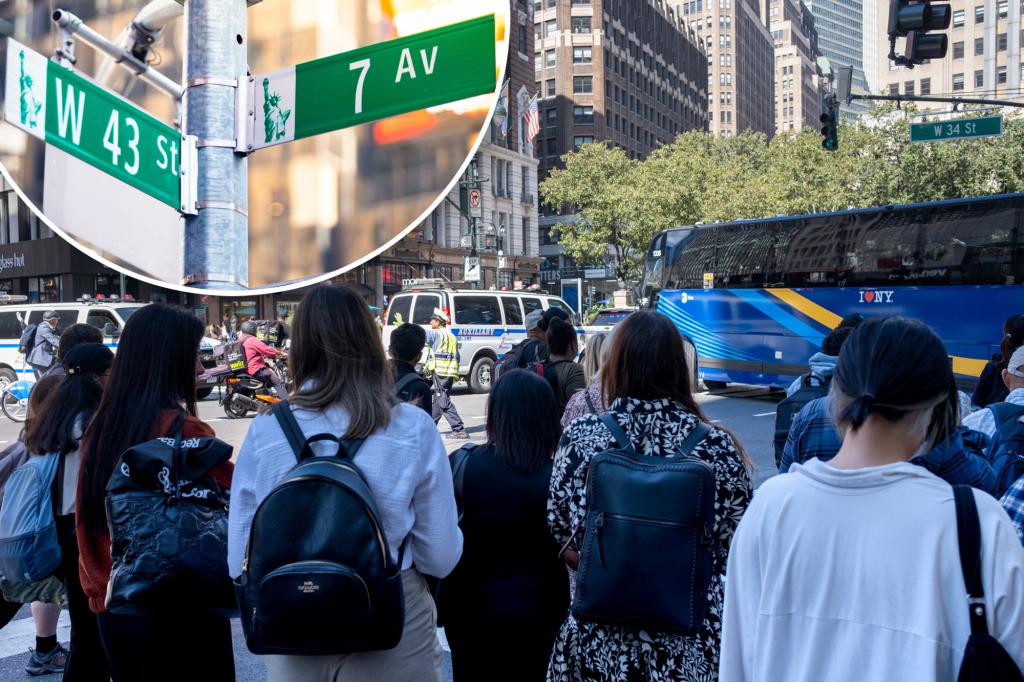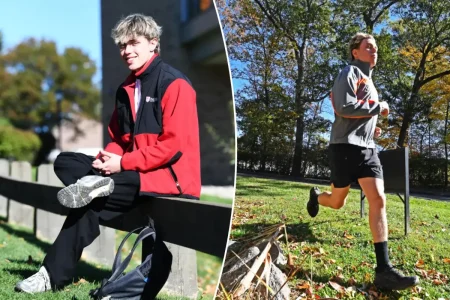Navigating the labyrinthine streets of New York City, a concrete jungle teeming with activity, can be a daunting task, especially for tourists, newcomers, and even seasoned commuters. The seemingly chaotic grid of avenues and numbered streets, coupled with the frenetic pace of life, can easily disorient even the most experienced traveler. Recently, a viral video featuring a self-proclaimed city native attempted to demystify the city’s layout with a simple, yet seemingly perplexing, tip: “Evens go east, odds go west.” This seemingly straightforward rule, implying that even-numbered streets run eastbound and odd-numbered streets run westbound, ignited a wave of confusion and debate online, highlighting the complexities of navigating the city and the diverse methods people employ to find their way.
The video, featuring a food influencer named Sheffi and her local companion Steve, presented this directional advice as a crucial hack for understanding the city’s street system. Sheffi, with Steve’s affirmation, confidently explained that observing the direction of traffic flow on a numbered street would reveal its orientation: even numbers indicate eastward movement, and odd numbers indicate westward. This simple observation, they claimed, would help individuals determine the correct direction when turning onto avenues. However, this seemingly helpful tip was met with a mix of bewilderment and amusement online. Many commenters expressed their confusion, questioning how the rule could be applied without a prior understanding of east and west directions. Others pointed out the exceptions to the rule and the intricacies of navigating a city as complex as New York. The viral nature of the video, and the subsequent online discussion, underscored the ongoing challenge of navigating the city’s streets and the diverse approaches people take to find their way.
The “evens go east, odds go west” rule, while seemingly straightforward, oversimplifies the complexities of New York City’s street layout. While it generally holds true for numbered streets in Manhattan, particularly above 14th Street, there are numerous exceptions and nuances. Certain areas, such as lower Manhattan and parts of the outer boroughs, deviate from this pattern. Furthermore, avenues, which run north and south, add another layer of complexity. Navigating intersections, considering one-way streets, and accounting for pedestrian traffic all contribute to the challenge. The online reaction to the video highlights the limitations of such simplified rules and the need for a more comprehensive understanding of the city’s layout.
Beyond the viral video and its ensuing debate, several other resources and strategies exist for navigating New York City. Long-time residents often develop an intuitive sense of direction, relying on landmarks, neighborhood boundaries, and a general understanding of the city’s grid. However, for newcomers and visitors, technological aids have become indispensable. GPS apps, such as Google Maps, provide real-time navigation, offering turn-by-turn directions, identifying points of interest, and calculating estimated travel times. Transit apps, like the aforementioned Pigeon app, offer specific information about public transportation, including subway and bus routes, schedules, and service disruptions. These digital tools have revolutionized urban navigation, making it significantly easier for people to find their way in complex environments like New York City.
The discussion surrounding the “evens go east, odds go west” rule also revealed additional, often overlooked, navigation tips. One commenter pointed out that odd addresses usually face New Jersey, providing a helpful reference point for those familiar with the geographical location of the state. Another commenter suggested combining this rule with the observation that odd addresses are typically on the north side of the street and even addresses on the south side, which, while generally true, can have exceptions. These additional tips, passed down through local knowledge, offer alternative ways to orient oneself within the city’s grid. However, they also highlight the importance of supplementing local knowledge with digital tools and a general awareness of one’s surroundings.
The viral video and the subsequent online discussion serve as a reminder of the perpetual challenge of navigating New York City. While simplified rules and local tips can be helpful starting points, they often fall short of providing a truly comprehensive understanding of the city’s complex layout. Digital tools like GPS apps and transit apps have become essential for navigating the city’s streets and public transportation system, offering real-time information, route planning capabilities, and updates on service disruptions. Ultimately, navigating New York City successfully requires a combination of resources, strategies, and awareness. By combining local knowledge, technological aids, and a willingness to explore, individuals can overcome the initial confusion and embrace the city’s dynamic and ever-evolving urban landscape.














